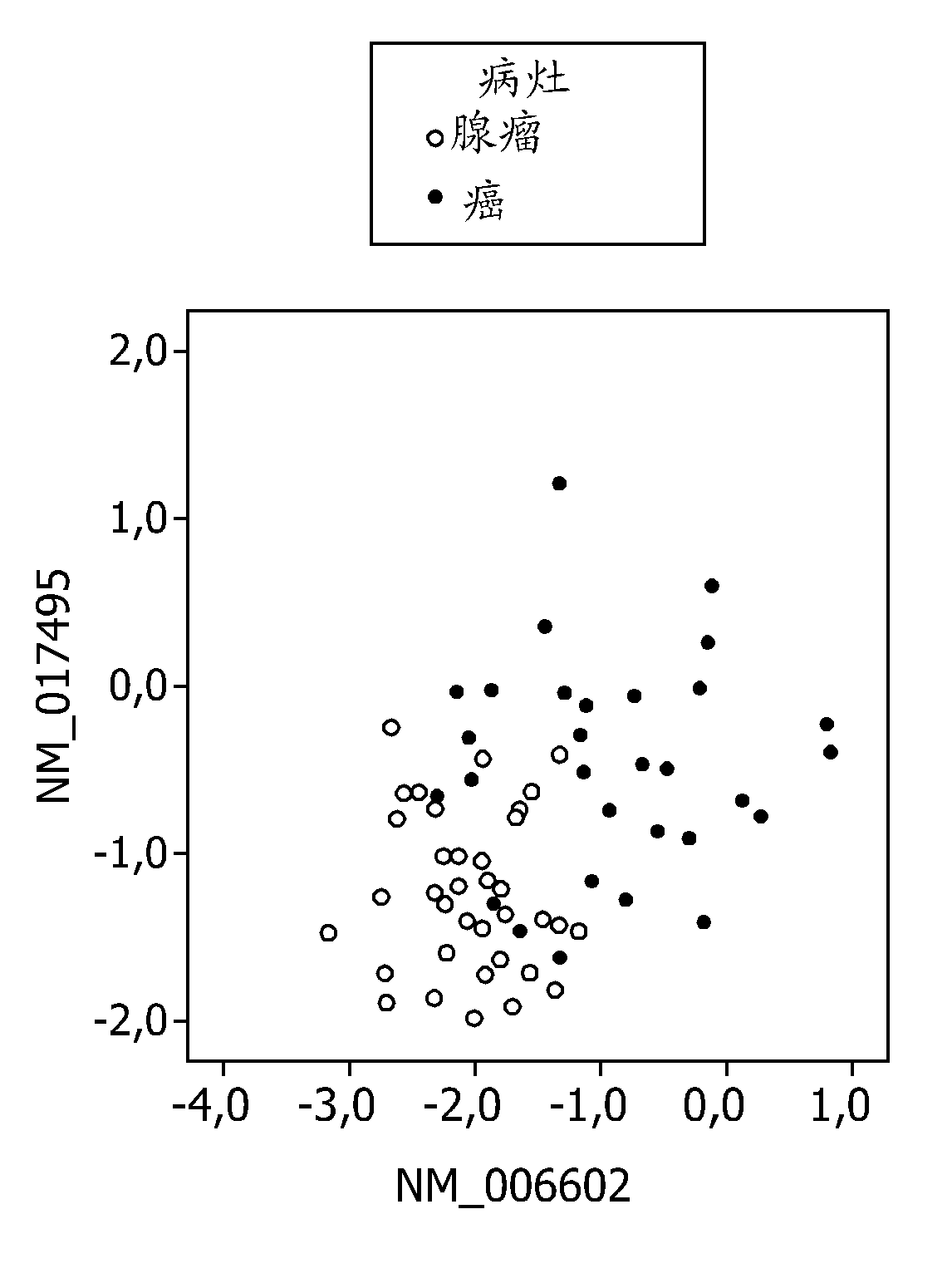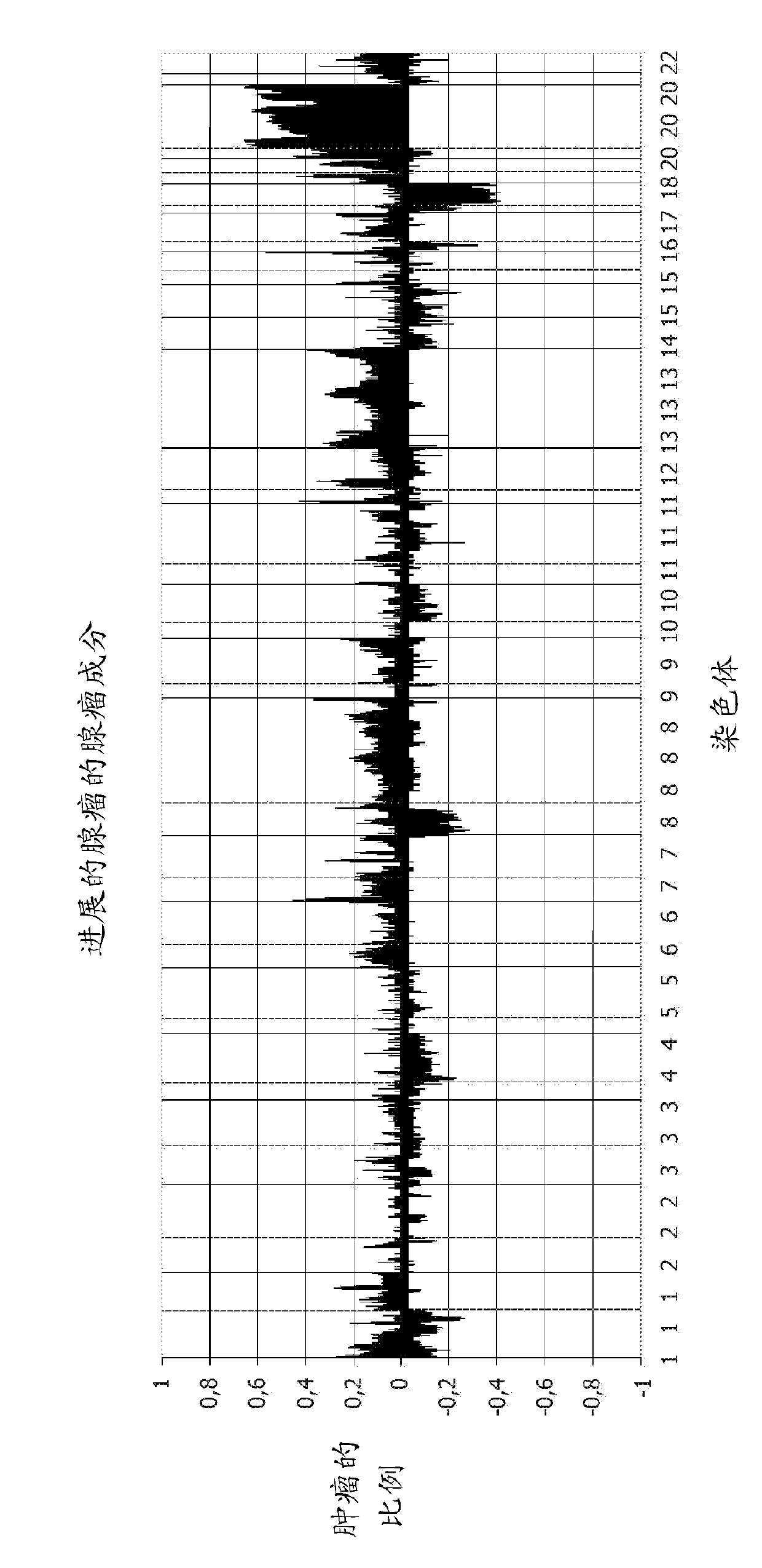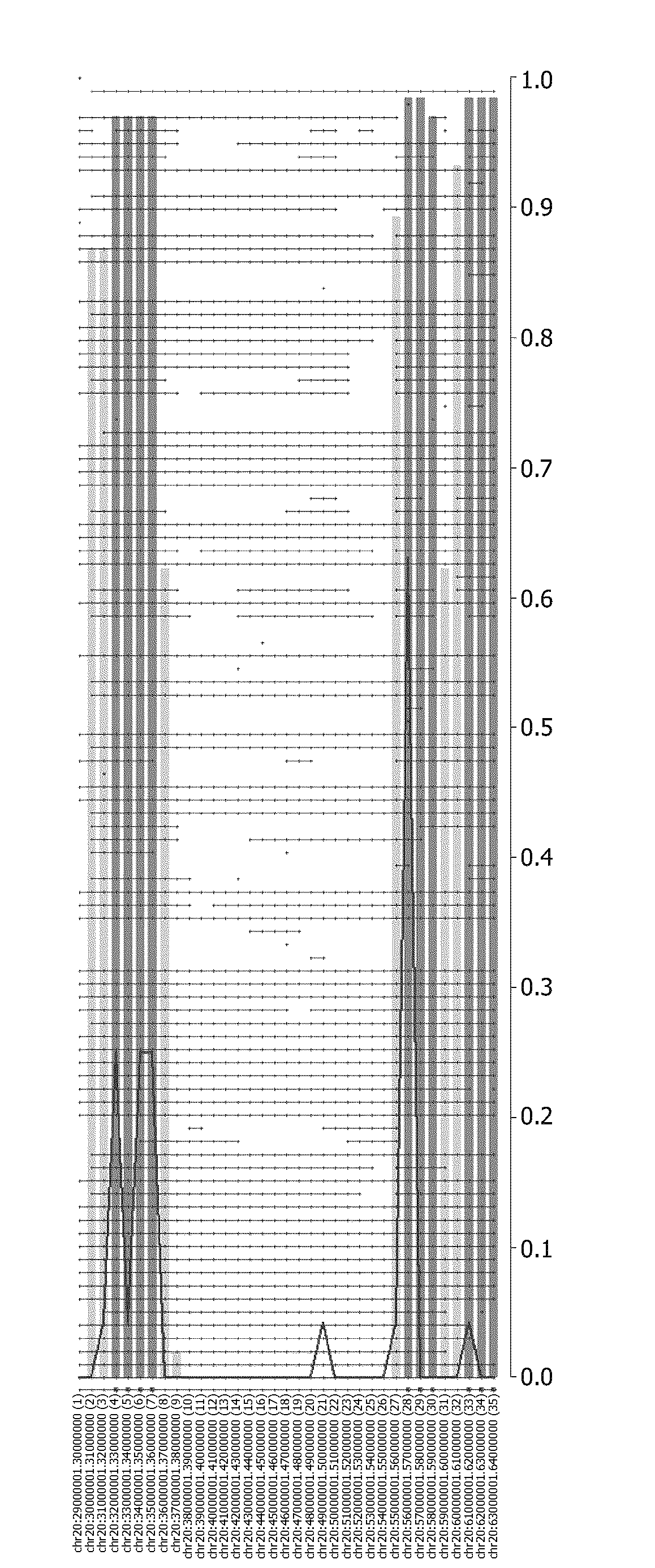Methods and compositions for diagnosing and treating a colorectal adenocarcinoma
A technology for rectal adenocarcinoma and colon, which is applied in the field of diagnosis and treatment of colorectal adenocarcinoma and its composition, and can solve problems such as the lack of identification of gene markers
- Summary
- Abstract
- Description
- Claims
- Application Information
AI Technical Summary
Problems solved by technology
Method used
Image
Examples
Embodiment 1
[0189] Example 1 - Materials and methods
[0190] tumor sample
[0191] Forty-one formalin-fixed and paraffin-embedded colorectal adenomas (foci with adenocarcinoma, also called malignant polyps), and 73 prospectively collected snap-frozen colorectal tumor samples (37 nonprogressed adenomas and 36 adenocarcinomas) were studied. All samples were used in accordance with institutional ethics regulations.
[0192] The 41 progressive adenomas corresponded to 19 women and 18 men (three patients had more than one lesion). The mean age was 67 years (range 45-86). From these samples, the adenoma and carcinoma components were analyzed separately, increasing to a total of 82 archive samples (41x2).
[0193] The 73 frozen samples corresponded to 31 women and 34 men (6 patients with multiple tumors). The mean age was 69 years (range, 47-89). All histological sections were evaluated by a pathologist. Array CGH was performed on both sets of samples, while expression microarray ana...
Embodiment 2-20
[0221] The demarcation of the acquisition area on embodiment 2-20q
[0222] Forty-one progressive colorectal adenomas previously studied by classical CGH were analyzed with array CGH. The adenoma and adenocarcinoma components in these samples were tested separately. 20q gain occurs in more than 60% of cases ( Figure 1A , 1B; attached Figure 1A ). Although lower amplitudes are sometimes shown in the adenoma component ( Figure 1A and1B ), but the pattern of copy number changes did not differ between the adenoma and adenocarcinoma fractions (measured by CGHMultiArray).
[0223] Next, the DNA copy number status of 37 nonprogressive adenomas and 36 adenocarcinomas was analyzed. Of these 73 tumors, 67 (34 adenomas and 33 adenocarcinomas) showed high-quality genomic profiles with MAD values Figure 1C , 1D, attached Figure 1B ).
[0224] To identify the most relevant regions within 20q containing putative oncogenes that play a role in colorectal adenoma to adenocarcino...
Embodiment 3
[0225] Example 3 - Identification of Differentially Expressed Genes
[0226] Microarray expression analysis was performed on 37 non-progressive adenomas and 36 adenocarcinomas for which snap-frozen material was available. High-quality expression array data were obtained from 68 cases (37 adenomas and 31 adenocarcinomas, 7% flow rate).
[0227] Supervised data analysis to identify putative oncogenes on 20q was performed by two different approaches, we compared carcinomas to adenomas, and we compared tumors with 20q gain to tumors without 20q gain. The first method showed that there were 122 genes up-regulated genome-wide in carcinomas and 219 downregulated genes (341 differentially expressed genes in total). Among these 122 upregulated genes, 14 were mapped to chromosome 20q (Table 1). For the second approach, only tumors (adenoma and adenocarcinoma) with both array CGH data and expression data (n = 64) were included. As a pre-selection, genes differentially expressed (up...
PUM
 Login to View More
Login to View More Abstract
Description
Claims
Application Information
 Login to View More
Login to View More - R&D
- Intellectual Property
- Life Sciences
- Materials
- Tech Scout
- Unparalleled Data Quality
- Higher Quality Content
- 60% Fewer Hallucinations
Browse by: Latest US Patents, China's latest patents, Technical Efficacy Thesaurus, Application Domain, Technology Topic, Popular Technical Reports.
© 2025 PatSnap. All rights reserved.Legal|Privacy policy|Modern Slavery Act Transparency Statement|Sitemap|About US| Contact US: help@patsnap.com



